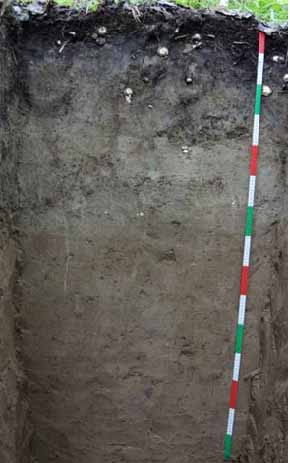Agrogenic transformation of texture-differentiated soil profiles in micro-depressions
DOI:
https://doi.org/10.31251/pos.v5i1.171Keywords:
agricultural landscape; micro-depression; chernozem; Luvisol; agrozem; agrogenic influenceAbstract
The aim of the study. Due to the introduction of texture-differentiated soils of micro-depressions in the agricultural use, the aim of the study was to assess the degree of the soil profile transformation resultant from the different duration of agrogenic exposure.
Location and time of the study. The study was carried out in July 2019 and 2021 in the flat-micro-depression agricultural landscape in the Kozhevnikovsky district of the Tomsk region, approximately 6 km east of the Bazoy village.
Methodology. To study agrogenic transformation of the profile of texture-differentiated soils, soil pits were dug in the 1) undisturbed depression under forest, 2) in the micro-depression where the forest was cleared less than three years prior to the study, and 3) in the depression cleared of forest and used as an arable land for more than five, but less than ten years at the time of the study. For comparison, a pit was also dug in the adjacent area of agricultural landscape (non-depressed).
Main results. In the flat-micro-depression agricultural landscape, the most common soil is Luvic Greyzemic Chernozem (Loamic, Aric). The soil in the micro-depression under the forest is represented by Albic Abruptic Luvisol (Loamic, Cutanic, Humic). The soil in the micro-depression with recently cleared forest is attributed to Abruptic Luvisol (Loamic, Aric). The soil in the micro-depression used as arable land for more than five years is classified as Haplic Luvisol (Loamic, Aric, Humic).
Conclusion. When relating the horizontation of the texture-differentiated soils in micro-depressions with agrogenic influence duration, it is notable that the dark humus and eluvial horizons first become blended, and then transform into agro-dark humus horizon. At the same time, the taxonomic attribution first changes at the subtype level, and then at the type level, thus increasing the classification diversity of soils on the studied territory.
Downloads

Downloads
Published
How to Cite
Issue
Section
License
Copyright (c) 2022 The Journal of Soils and Environment

This work is licensed under a Creative Commons Attribution 4.0 International License.






